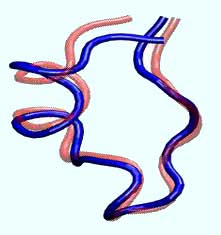Articles and reports from the Life Sciences and chemistry area deal with applied and basic research into modern biology, chemistry and human medicine.
Valuable information can be found on a range of life sciences fields including bacteriology, biochemistry, bionics, bioinformatics, biophysics, biotechnology, genetics, geobotany, human biology, marine biology, microbiology, molecular biology, cellular biology, zoology, bioinorganic chemistry, microchemistry and environmental chemistry.

Structural studies of a key enzyme have revealed how dangerous strains of the bacterium, Staphylococcus aureus , become resistant to antibiotics.
Resistant strains of Staphylococcus aureus , which are also called “hospital staph” because of their prevalence in hospitals, constitute 34 percent of the clinical isolates in the United States, more than 60 percent in Japan, Singapore and Taiwan, and more than 50 percent in Italy and Portugal. And the emergence of strains of

A new company is helping to solve a 20-year problem in the chemicals industry.
Enviresearch, a Newcastle University ‘spin-out’, uses computer models to determine whether chemicals are environmentally friendly.
The British Government demands that chemicals undergo a rigorous testing programme, including an ‘environmental risk assessment’, before it is satisfied a substance is safe. Only then will it grant a sales licence for the UK and Europe.
Due to these strict regulations,

Sexual reproduction has many advantages — some most pleasurable — and probably leads to the long-term survival of the species concerned. During the formation of reproductive cells or gametes, sexual reproduction is accompanied by an exchange of genes between the two chromosomes inherited from the parents. Each individual arising from these gametes thus receives a veritable mosaic of parental and grandparental characteristics, and so at one and the same time resembles and differs from the parents.

For years, the comparison of simulated and experimental protein folding kinetics has been a “Holy Grail” for biologists and chemists. But scientists seeking to confirm protein-folding theory with laboratory experiments have been unable to cross the microsecond barrier. This obstacle in time existed because experiments could not be performed fast enough, nor simulations run long enough, to permit a direct comparison.
Now, measurements from the University of Illinois at Urbana-Champaign and m

Two parts of the body’s immune system are critical for its normal functioning. One of these, the innate immune component, must defend the body against onslaughts from foreign substances it has never before seen. Failure of the immune system can result in cancer, autoimmune disease, or life threatening viral infections. Scientists at Memorial Sloan-Kettering Cancer Center have identified a gene called MEF that is essential to the development of Natural Killer cells and Natural Killer T-cells, whi

The world speed record for protein folding apparently goes to an unusually tiny specimen that traces its origins to Gila monster spit.
So reports a team of University of Florida researchers in a paper published this week in the online edition of the Journal of the American Chemical Society. Though significant mainly from a purely scientific standpoint, the finding eventually may be important in researchers’ understanding of the underlying causes behind a host of maladies.
Prote